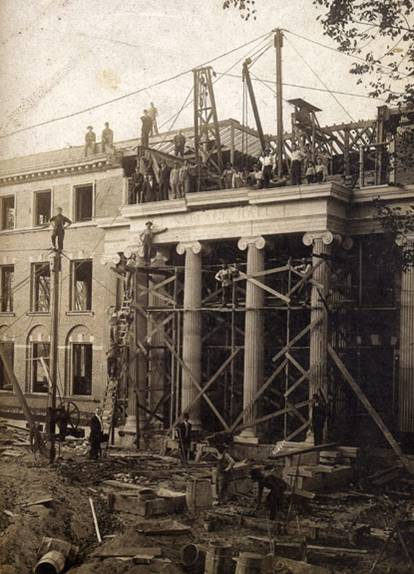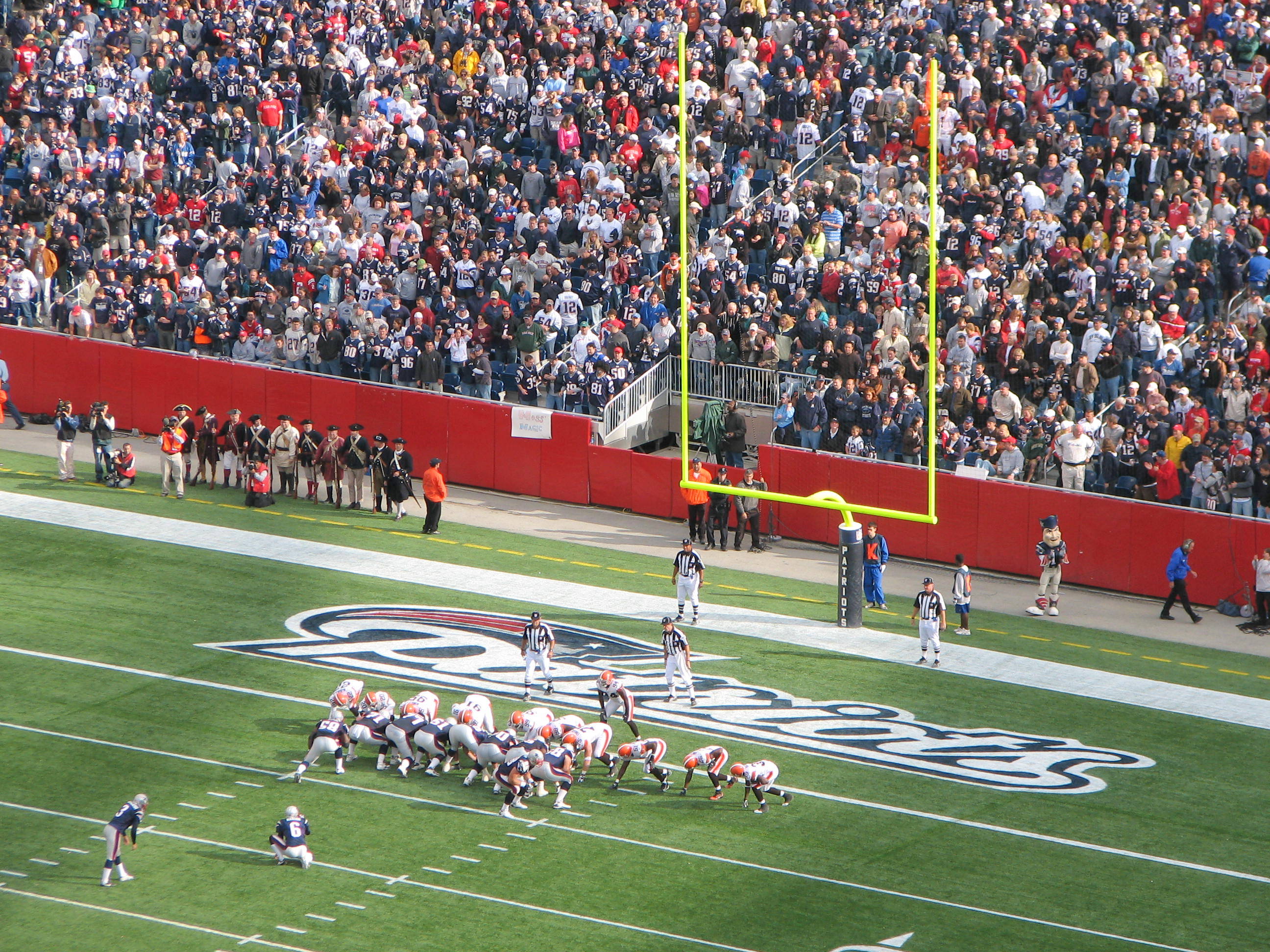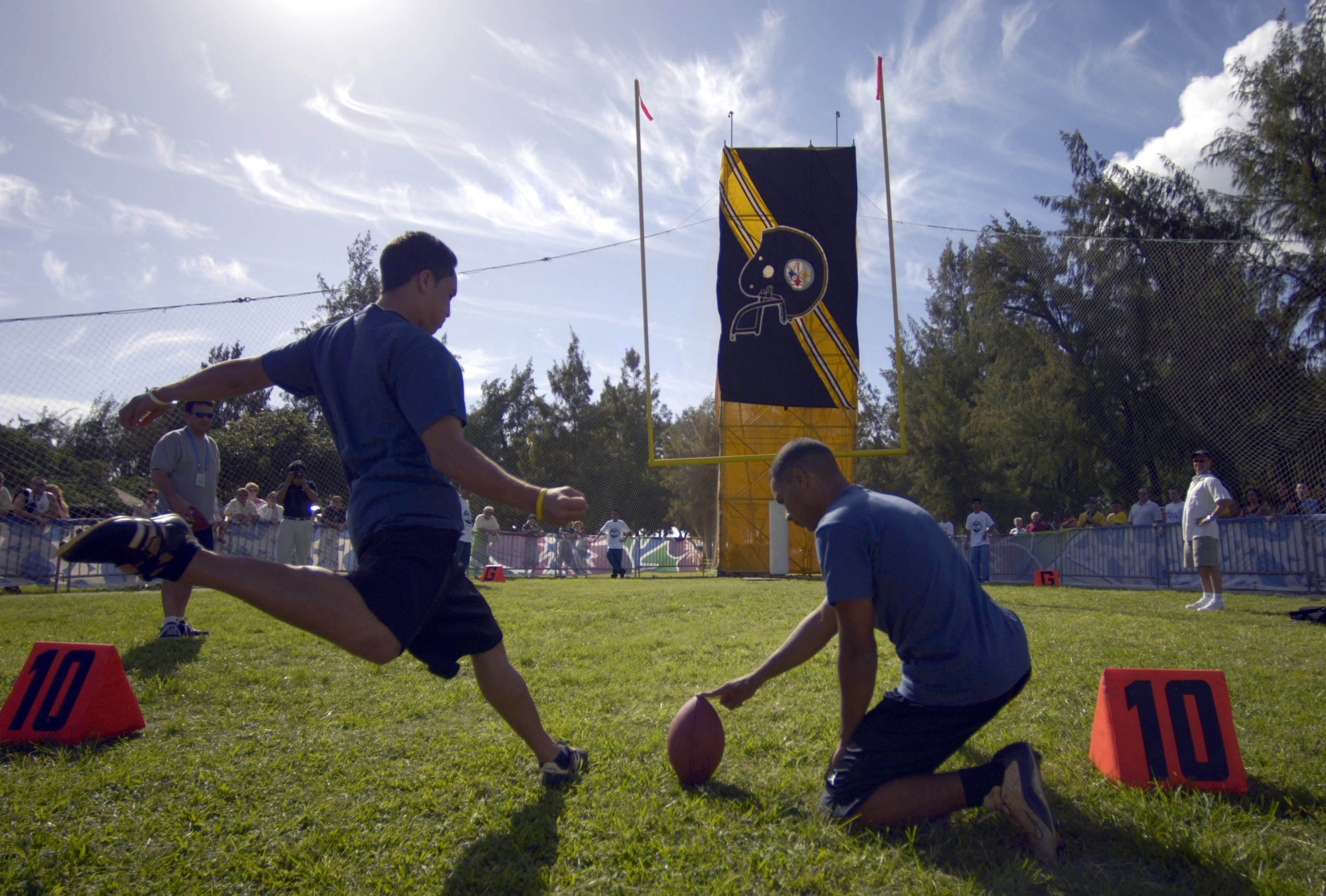|
Bill Glassgow
Willis Allen "Bill" Glassgow (April 21, 1907 – November 1, 1959) graduated from Shenandoah Iowa high school. Willis was an American football player and attorney. He played halfback for the University of Iowa from 1927 to 1929, was selected as a first-team All-American in 1929, and received the 1929 Chicago Tribune Silver Football as the best football player in the Big Ten Conference. He played two seasons of professional football in the National Football League for the Portsmouth Spartans in 1930 and the Chicago Cardinals in 1931. He practiced law in Iowa from 1933 to 1959, including two terms as the Page County Attorney (1935–1939) and three terms as the Linn County Attorney (1951–1957). Biography Early years Glassgow was born in Wheeling, Missouri, in 1907. He was the son of Franklin and Nellie (Williams) Glassgow and lived on a farm west of Wheeling for the first ten years of his life. (reprinted from The Des Moines Register) He moved with his family ... [...More Info...] [...Related Items...] OR: [Wikipedia] [Google] [Baidu] |
Wheeling, Missouri
Wheeling is a city in eastern Livingston County, Missouri, United States. The population was 220 at the 2020 census. History Wheeling was laid out in 1865, and named after Wheeling, West Virginia, the native home of a first settler. A post office called Wheeling has been in operation since 1866. Geography Wheeling is located on Missouri Route B one-half mile north of US Route 36 and one mile west of the Livingston- Linn county line. Meadville is four miles to the east. Muddy Creek flows past 1.5 miles to the west.''Missouri Atlas & Gazetteer,'' DeLorme, 1998, First edition, p. 22 According to the United States Census Bureau, the city has a total area of , all land. Demographics 2010 census As of the census of 2010, there were 271 people, 107 households, and 78 families living in the city. The population density was . There were 125 housing units at an average density of . The racial makeup of the city was 98.9% White, 0.4% African American, 0.4% Native American, and 0.4 ... [...More Info...] [...Related Items...] OR: [Wikipedia] [Google] [Baidu] |
Iowa Hawkeyes Football
The Iowa Hawkeyes football program represents the University of Iowa in college football. The Hawkeyes compete in the West division of the Big Ten Conference. Iowa joined the Conference (then known as the Western Conference or Big Nine) in 1899 and played their first Conference football season in 1900. They are a Division I Football Bowl Subdivision (FBS) member of the National Collegiate Athletic Association. The Hawkeyes play their home games in Iowa City, Iowa at Kinnick Stadium, with a capacity of 69,250. The Hawkeyes are coached by Kirk Ferentz, who is in his 24th season as the head coach and is the longest current tenured head coach in NCAA Division I FBS. The Hawkeyes have won 13 conference championships (including 11 in the Big Ten). Iowa has never finished a season ranked No. 1 in either the AP or Coaches' Poll, though still claiming five national championships. History Early history Football was first played as a club sport at Iowa in 1872, with intramural games ... [...More Info...] [...Related Items...] OR: [Wikipedia] [Google] [Baidu] |
1928 Michigan Wolverines Football Team
The 1928 Michigan Wolverines football team was an American football team that represented the University of Michigan in the 1928 Big Ten Conference football season. The Wolverines compiled a 3–4–1 record (2–3 against Big Ten opponents), tied for seventh place in the Big Ten, and were outscored by their opponents by a total of 62 to 36. Before and during the season, a feud developed between head coach Tad Wieman and athletic director Fielding H. Yost, who had been the head coach until 1927. The team opened the season with four consecutive losses, the worst start by a Michigan football team to that point in time. During the losing streak, the Wolverines lost to Indiana, a program that had never beaten or even scored a point against a Michigan team, and Wisconsin, a program that had not beaten a Michigan team since 1899. The Wolverines finished the season with three wins and a tie; their victory over Big Ten champion Illinois spoiled an otherwise perfect season for the Illini. ... [...More Info...] [...Related Items...] OR: [Wikipedia] [Google] [Baidu] |
1928 Ohio State Buckeyes Football Team
{{ColumbusOH-sport-stub ...
The 1928 Ohio State Buckeyes football team represented Ohio State University as a member of the Big Ten Conference duiring the 1928 college football season. The Buckeyes compiled a 5–2–1 record and got their first win over Michigan in six seasons. They Buckeyes outscored their opponents 135–35. It was John Wilce's last season as head coach. He finished his tenure at Ohio State with a 78–33–9 record and 4–7 against Michigan with three Big Ten Conference titles. Schedule Coaching staff * John Wilce, head coach, 16th year References Ohio State Ohio State Buckeyes football seasons Ohio State Buckeyes football The Ohio State Buckeyes football team competes as part of the NCAA Division I Football Bowl Subdivision, representing Ohio State University in the East Division of the Big Ten Conference. Ohio State has played their home games at Ohio Stadium i ... [...More Info...] [...Related Items...] OR: [Wikipedia] [Google] [Baidu] |
Monmouth College
Monmouth College is a private Presbyterian liberal arts college in Monmouth, Illinois. Monmouth enrolls approximately 900 students from 21 countries who choose courses from 40 major programs, 43 minors, and 17 pre-professional programs in a core curriculum. History Monmouth College was founded on April 18, 1853, by the Second Presbytery of Illinois of the Associate Reformed Presbyterian Church. The college celebrates this date as "Scholars Day", cancelling classes for a day of celebration and an honors convocation. Founded as "Monmouth Academy," the school became Monmouth College after receiving a charter from the state legislature on September 3, 1856. The college remains affiliated with the Presbyterian Church (USA) and is a member of the Associated Colleges of the Midwest, a consortium of small, private liberal arts colleges. The college's motto "Lux" ("Light") appears on its seal. The first president, David Wallace built two mission churches in Massachusetts before as ... [...More Info...] [...Related Items...] OR: [Wikipedia] [Google] [Baidu] |
Extra Point
The conversion, try (American football, also known as a point(s) after touchdown, PAT, or (depending on the number of points) extra point/2-point conversion), or convert (Canadian football) occurs immediately after a touchdown during which the scoring team is allowed to attempt to score one extra point by kicking the ball through the uprights in the manner of a field goal, or two points by bringing the ball into the end zone in the manner of a touchdown. Attempts at a try or convert are scrimmage plays, with the ball initially placed at any point between the hash marks, at the option of the team making the attempt. The yard line that attempts are made from depends on the league and the type of try or convert being attempted. If the try or convert is scored by kicking the ball through the uprights, the team gets an additional one point for their touchdown, bringing their total for that score from six points to seven. If two points are needed or desired, a two-point conversion may ... [...More Info...] [...Related Items...] OR: [Wikipedia] [Google] [Baidu] |
Touchdown
A touchdown (abbreviated as TD) is a scoring play in gridiron football. Whether running, passing, returning a kickoff or punt, or recovering a turnover, a team scores a touchdown by advancing the ball into the opponent's end zone. In American football, a touchdown is worth six points and is followed by an extra point or two-point conversion attempt. Description To score a touchdown, one team must take the football into the opposite end zone. In all gridiron codes, the touchdown is scored the instant the ball touches or "breaks" the plane of the front of the goal line (that is, if any part of the ball is in the space on, above, or across the goal line) while in the possession of a player whose team is trying to score in that end zone. This particular requirement of the touchdown differs from other sports in which points are scored by moving a ball or equivalent object into a goal where the whole of the relevant object must cross the whole of the goal line for a score to ... [...More Info...] [...Related Items...] OR: [Wikipedia] [Google] [Baidu] |
Backfield
The offensive backfield is the area of an American football field behind the line of scrimmage. The offensive backfield can also refer to members of offense who begin plays behind the line, typically including any backs on the field, such as the quarterback, halfbacks and fullback. History The modernization of the roles of lineman and backs is often traced to Amos Alonzo Stagg. Some of the greatest backfields in the history of college football include those of the 1912 Carlisle Indians, 1917 Georgia Tech Golden Tornado, 1924 Notre Dame Fighting Irish, and 1945 Army Cadets. Joe Guyon was a member of both the aforementioned Carlisle and Georgia Tech teams. Typically, quarterbacks or halfbacks passed the ball, and fullbacks handled kicking duties. Play in the backfield Most running plays begin with a hand-off in the offensive backfield. All kicks and punts must take place in the offensive backfield. If the offensive ball-carrier is tackled in the backfield, the team w ... [...More Info...] [...Related Items...] OR: [Wikipedia] [Google] [Baidu] |
Sidelines
The "sidelines" are the white or colored lines which mark the outer boundaries of a sports field, running parallel to each other and perpendicular to the goal lines. The sidelines are also where the coaching staff and players out of play operate during a game. The area outside the sidelines is said to be out of bounds. The term is predominantly in use in American football, Canadian football, field lacrosse and basketball. In rugby union, rugby league and association football, they are known as touch-lines. The foul line is a similar concept in baseball. In cricket, the boundary lines can be marked by a rope. Sports in which the playing surface is bounded by walls, such as ice hockey, box lacrosse Box lacrosse, also known as boxla, box, or indoor lacrosse, is an indoor version of lacrosse played mostly in North America. The game originated in Canada in the 1930s, where it is more popular than field lacrosse. Lacrosse is Canada's officia ..., and indoor football, do no ... [...More Info...] [...Related Items...] OR: [Wikipedia] [Google] [Baidu] |
Burt Ingwersen
Burton Aherns Ingwersen (August 29, 1898 – July 15, 1969) was an American football, basketball, and baseball player and coach of football and baseball. He served as the head football coach at the University of Iowa from 1924 to 1931, compiling a career college football record of 33–27–4. Ingwersen played football, basketball, and baseball at the University of Illinois and was an assistant football coach at the school in two stints totaling 25 seasons. He also served as an assistant football coach at Northwestern University and was the head baseball coach there from 1936 to 1939, tallying a mark of 35–51–1. Early years and playing career Ingwersen was born in Bryant, Iowa, a suburb of Clinton, but his parents and he moved across the river to Fulton, Illinois when Ingwersen was in grade school. Since his high school in Fulton did not compete in football, Ingwersen played across the river at Clinton High School. Ingwersen accepted a scholarship offer from the Universi ... [...More Info...] [...Related Items...] OR: [Wikipedia] [Google] [Baidu] |
Placekicker
Placekicker, or simply kicker (PK or K), is the player in gridiron football who is responsible for the kicking duties of field goals and extra points. In many cases, the placekicker also serves as the team's kickoff specialist or punter. Specialized role The kicker initially was not a specialized role. Prior to the 1934 standardization of the prolate spheroid shape of the ball, drop kicking was the prevalent method of kicking field goals and conversions, but even after its replacement by place kicking, until the 1960s the kicker almost always doubled at another position on the roster. George Blanda, Lou Groza, Frank Gifford and Paul Hornung are prominent examples of players who were stars at other positions as well as being known for their kicking abilities. When the one-platoon system was abolished in the 1940s, the era of "two-way" players gave way to increased specialization, teams would employ a specialist at the punter or kicker position. Ben Agajanian, who started ... [...More Info...] [...Related Items...] OR: [Wikipedia] [Google] [Baidu] |
Punter (football)
A punter (P) in gridiron football is a special teams player who receives the snapped ball directly from the line of scrimmage and then punts (kicks) the football to the opposing team so as to limit any field position advantage. This generally happens on a fourth down in American football and a third down in Canadian football. Punters may also occasionally take part in fake punts in those same situations, when they throw or run the football instead of punting. Skills and usage The purpose of the punt is to force the team that is receiving the kick to start as far as possible from the kicking team's end zone. Accordingly, the most effective punts land just outside the receiving team's end zone and land either out of bounds (making it impossible to advance the ball until the next play) or after being kicked exceptionally high (allowing the kicking team time to run down the field and prevent the punt returner from advancing the ball). Punters therefore must be able to kick t ... [...More Info...] [...Related Items...] OR: [Wikipedia] [Google] [Baidu] |






